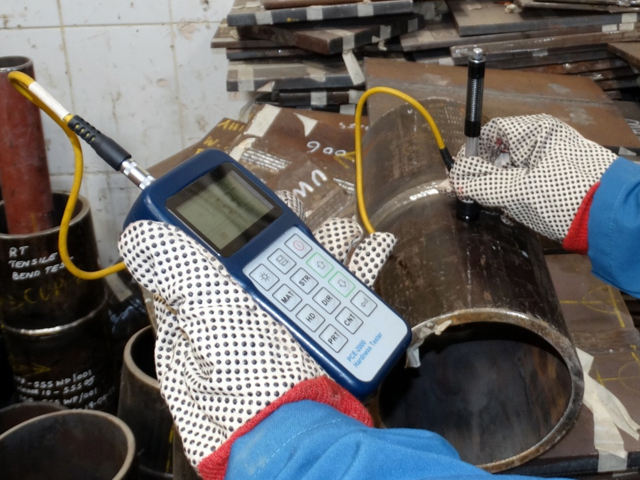
Non-Destructive Hardness Testing (HT)
The hardness of metallic materials is tested in hardness testing (HT). Hardness is defined as the resistance of metals to the indentation of a harder object.
The so-called hardness of metals is tested in hardness testing (HT). Hardness is defined as the resistance of metals to the indentation of a harder object.
Basic Principles of Hardness Testing (HT)
The hardness tester used in hardness testing (HT) by our inspectors is Leeb hardness tester which operates according to the dynamic rebound method.
Process of Hardness Testing (HT)
Prior to the start of testing, the best possible preparation of test points is essential; the surface must be dry and free from contamination and rust.
Then, the tester is calibrated according to the characteristics of the test object, the indenter is driven into the previously designated test points, and we conduct hardness testing (HT); the average of at least three indents gives the testing result.
When the hardness of a low-weight or thin-wall specimen is tested, incorrect results may be obtained owing to vibration produced as the indent hits the specimen, it can therefore be said that when the weight of an object to be tested does not exceed 5 kg, a stable support of an appropriate weight should be secured at the testing points; similar preparation is needed for testing thin-wall objects.
Our inspectors, owing to their technical knowledge, thoroughly prepare and conduct hardness testing (HT) in order to obtain as accurate testing results as possible.

